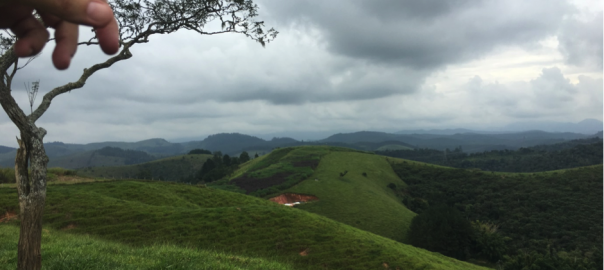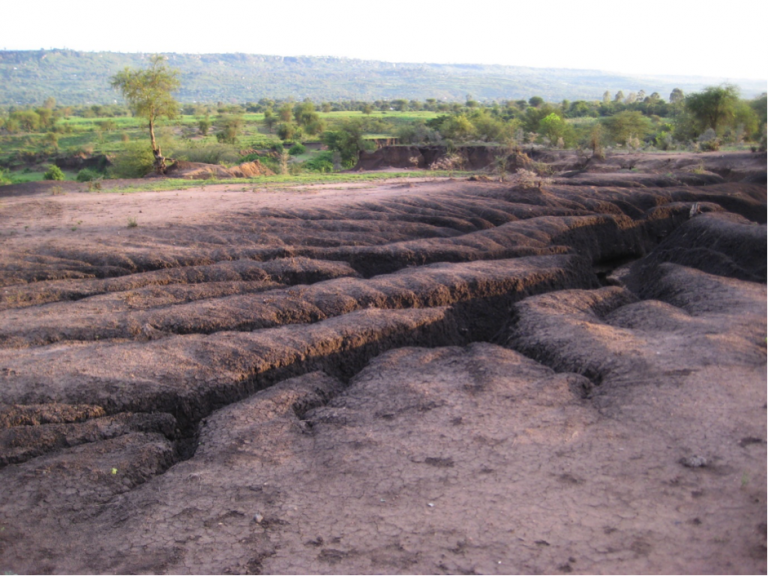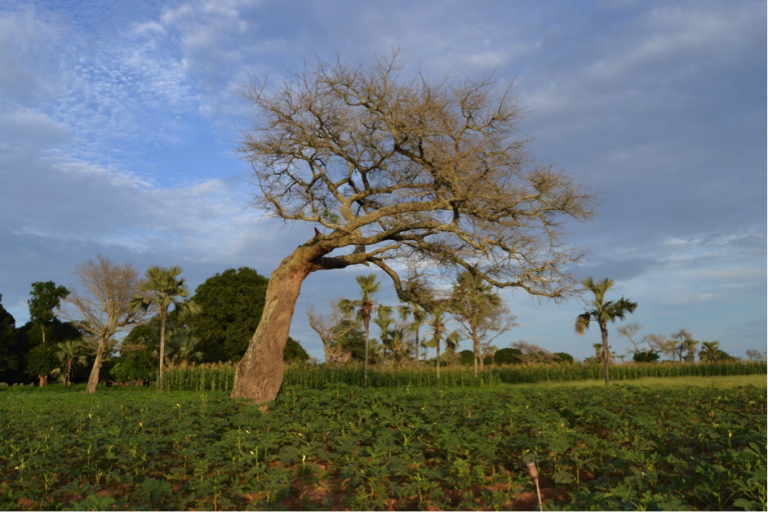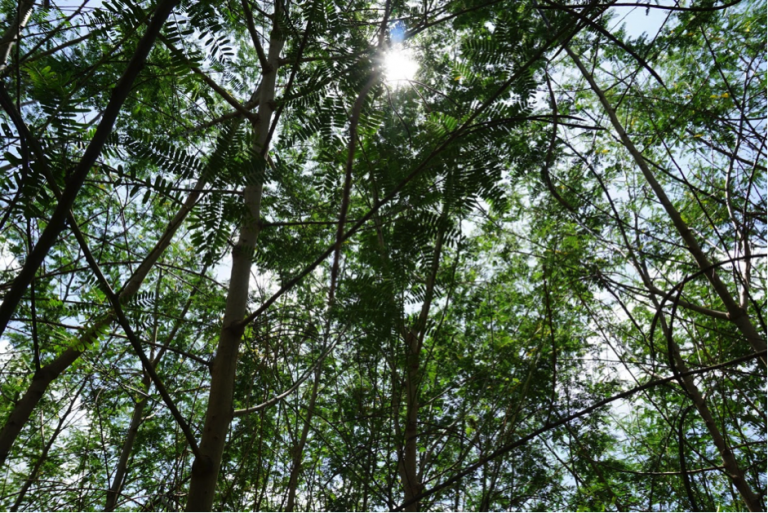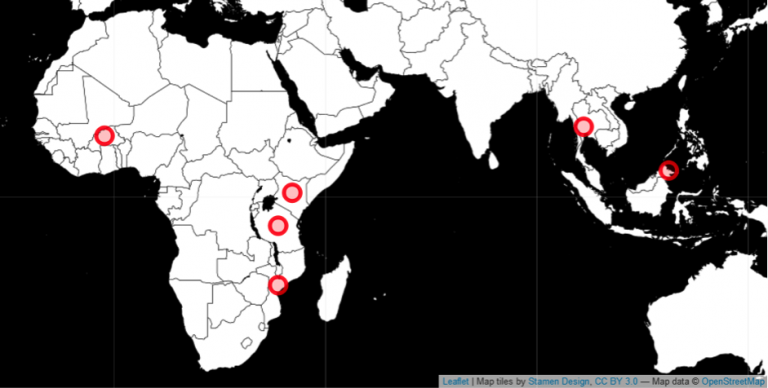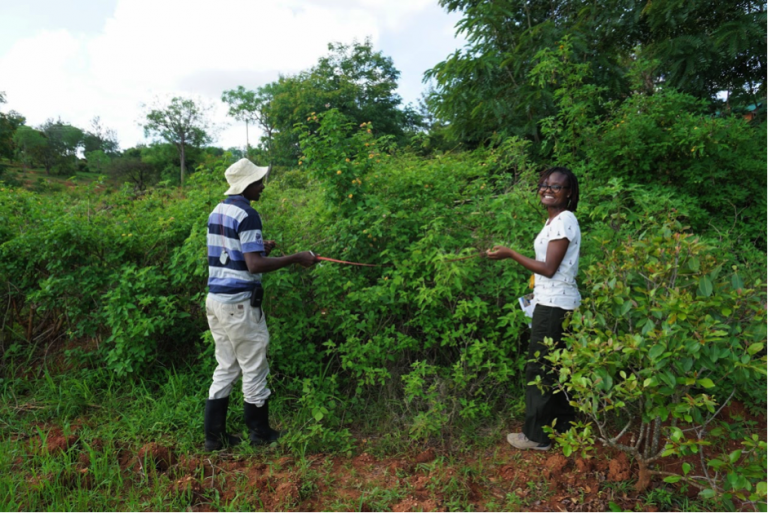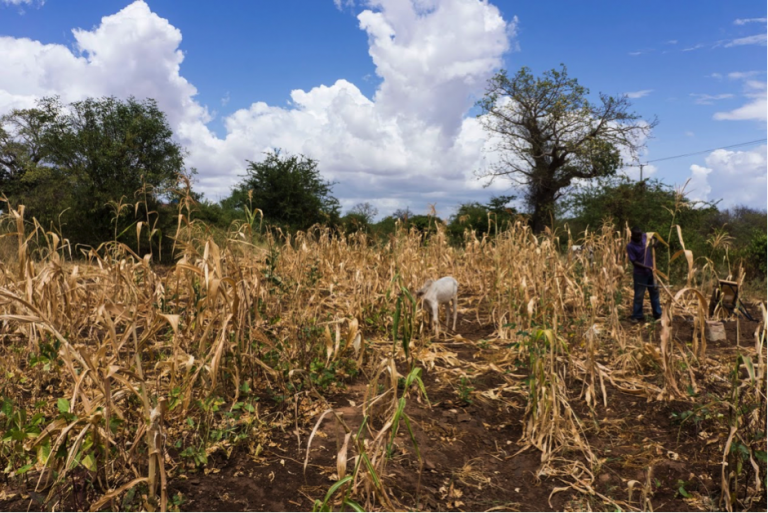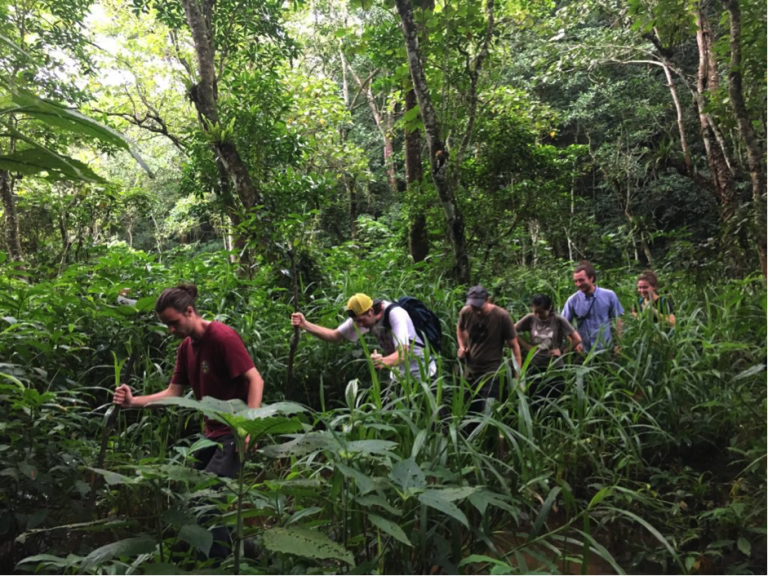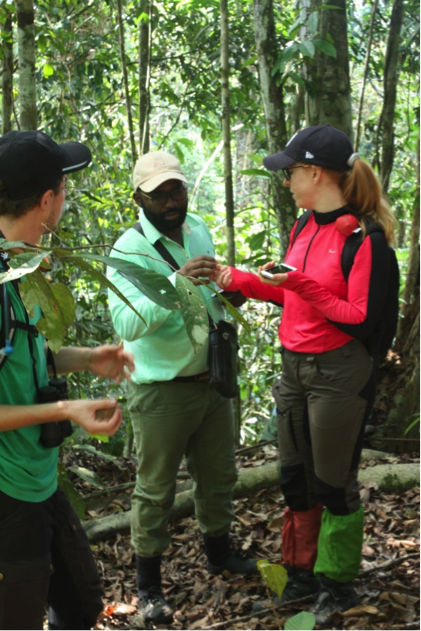By: Rosa Goodman, Associate Senior Lecturer at the Department of Forest Ecology and Management; Tropical Forestry and Land Use Management Unit at SLU.
In May 2019, I went to Brazil to see if we (the Swedish Forest Agency, Stockholm Water Institute, and SLU), could set up a cooperation with São Paulo Secretariat for Infrastructure and Environment (SIMA) to work on issues surrounding forests. This was my first time being part of a delegation and this is my first blog.
I have lived, worked, studied, and traveled extensively in 28 countries and have realized that I have an underlying life motto that “I cannot say no to a new country”. Every time I travel, I learn something new, something sad and something beautiful. Plus, as a tropical forest researcher, Brazil and its vast share of the world’s tropical forests are of peak importance to me. Many Brazilians, like the rest of us, are worried about the new government and eager to start an official cooperations with outsiders. This is what hooked me. If there is any chance to protect and even restore the world’s largest tropical forest, I am in.
Jair Bolsonaro is the Brazilian Donald Trump — on the far, far right, defends dictatorship and torture, and belittles women, minorities, and homosexuals. He was elected with the agenda to promote agri-corporation and exploit the country’s natural resources (which include a quarter of the world’s remaining tropical forests) and weaken environmental enforcement. He initially planned to merge the Ministries of Agriculture and Environment (presumable to weaken the Ministry of Environment’s autonomy and authority), but even agribusinesses opposed this citing unworkable differences.
In São Paulo, infrastructure and environment (two classically conflicting entities) were merged into a single ministry, SIMA. Fortunately, the members of the three institutes we met are striving to make this merger work to their advantage. In a time of uncertain and frightening political regimes and corruption, it was certainly a breath of fresh air to meet government officials with such dedication and sincerity — and with a mission aligned with mine.
On the first day, we met at the SIMA office in São Paulo. They wowed us with impressive large-scale restoration initiatives, data collection and management, geospatial analyses and landuse change detection, and complicated and complex socioeconomic-geopolitical-biophysical modelling. Brazil is quite unique among tropical countries in terms of excellent education, advanced technology, and producing many very impressive scientists and practitioners.
We also learned that the state of São Paulo is unique. It occupies less than 3% of the land and produces over a third of the country’s GDP. São Paulo State often leads Brazil in policy-making, as other states often adopt policies set in São Paulo. This is comforting because São Paulo seems to be quite progressive. The downside is that São Paulo state does not contain any of the Amazon basin forest.
In fact, São Paulo hosts the Atlantic forest ― one of the most threatened ecosystems on Earth. They are far more into protection and restoration than extractive management, and it is illegal to harvest or sell timber from native species (unless you planted it or are from an officially recognized traditional community). I certainly don’t blame them — there isn’t much Atlantic forest left and a lot can go wrong when timber harvesting is allowed.
We are thus stuck in the endless debate: Do we try to do the best thing for biodiversity and ecosystem services and strictly protect and restore the remaining natural forests — which all cost money and often perversely incentivize land conversion (aka, deforestation) to alleviate the responsibility of forest protection? Or do we try to be realists and encourage management of natural forests since it is the only business model that encourages the maintenance of natural forests? On the other hand, this strategy is also quite idealistic because it relies on both high technical capacity (to plan and carry out sustainable forest management) and honesty (ie, lack of corruption and bending of the rules). The forest industry seems to be forever plagued with corruption — as activities take place in remote locations, are so difficult to track, and require time scales much longer than our current economy and political systems accommodate. In any case, water and the connections between forests and water, are high on their minds after years of barely eking though a nearly catastrophic drought.
We spent the next day at Serra do Mar State Park with people from the Forest Foundation talking about just this. The Forest Foundation is full of do-gooders and nature lovers. They focus on protected areas and have developed a model to quantify the water ecosystem services provided by State’s protected areas and conservation units. Together the protected areas, conservation units, and Green Belt Biosphere Reserve provide a whopping 60% of the city’s water supply, and adding a fee to protect these water-providing areas would cost the average household a mere 0.50 USD each month. Everyone surveyed said they would be happy to pay this extra fee for water use — except that they don’t trust this money would actually be used for this.
In all my experience in countries across the globe, I have identified corruption as the biggest barrier to progress. There are so many good ideas and good people wanting to implement them, but nothing works with corruption in the equation. Funds disappear, regulations are prohibitive (especially against those trying to do things legitimately), people get frustrated and give up — or decide they are much better off participating. As the drug lords have taught us: plata o plomo (silver or lead). You would have to have a superhuman moral conviction and nonattachment to your own life to choose a bullet over a bribe. So corruption spreads and thrives like the most infectious disease and holds us in this global epidemic.
The notable lack of corruption, and instead a great sense of working together and following the rules (because that’s how you maintain a functioning society), is one of the things I love most about Sweden. Americans (I am an American) tend to fear that countries with such a strong social welfare system cannot survive: “If the State just takes care of everybody in need, how can they afford that? And why would anyone even bother working?” What I have figured out is that when you take corruption out of the equation, there is plenty to go around. It’s a beautiful way to run a country.
While in the state park, we got to take a gorgeous walk on Pirapitinga trail and visit the Paraíba river. We spent ample time on the misty rocks enjoying the power and beauty of the waterfalls crashing and flowing all around us. Water is life. Oxygen is life. Life is life. It is always good to reconnect with the reason I dedicate my life to conservation and sustainable management of our precious natural resources.

We had feijoada for lunch — a delicious meal of beans and rice and veges, and there was even a vegetarian version. Most people at Forest Foundation joined me in eating the meat free version, which makes me quite happy because I really respect authenticity and applying what we know to our own lives. I personally can’t talk about reducing deforestation and eat cows. But I will admit that I still fly around talking about mitigating climate change. I don’t take flying lightly, but I also haven’t found a proper alternative to real, in-person connection with other people and places. This a real conundrum. Traveling has made me a far more aware, compassionate, open-minded, and dedicated global citizen. It also leaves a huge carbon footprint.
I had an excellent conversation with Gerd, president of the Forest Foundation, about modeling, complicatedness, and complexity plus personal resilience. He builds hugely complicated models with input data from every sector and discipline and then injects them with complexity (e.g., a new president) to see how a new policy might play out across Brazil. I asked him how accurate his predictions have been. Gerd responded that the point is not about predicting the future but telling a story that changes things now. Human brains love stories, but I think that biologists, foresters, and climate change scientist are pretty slow to catch on.
There are actually so many good stories. We visited a farm in São José, owned by Mr. Pedro Magno. Our hosts laid out a lovely fika (very culturally appropriate) and enthusiastically showed us their restoration site — over 25 hectares of land (mostly hilltops) have been planted with Atlantic Forests species. Mr. Magno’s father fenced off a few hectares a decade ago, and now it is a dense secondary forest (see photo). Mr. Magno himself was inspired by this and volunteered his land to a local NGO, Ecological Corridor, for restoration. He is a lawyer and would prefer to leave the land in better shape than he inherited it. At the same time, he wants to show his neighbors that restoration does not mean giving up all tradition and income, so he keeps some cattle that roam and graze on the abundant green grasses.
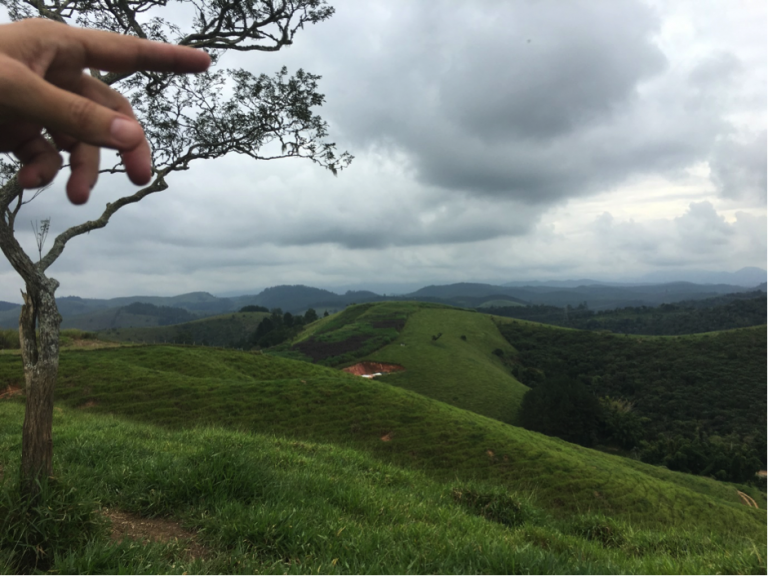
We also visited the Coruputuba Farm in Pindamonhangaba. It is a beautiful agroforestry system and an even more beautiful story. Someone from the government asked Patrick if he had ever heard of agroforestry. Patrick had not, so he did a Ph.D. on the topic (on this own land) and practices agroforestry to this day. His love and enthusiasm for life and his land was abundant and inspiring. Patrick produces high quality products, but it is difficult to market because of scale. He cannot provide an entire industry with a steady supply of timber, fruit, or vegetables, and cooperation and coordination among a bunch of farms in the region is hard to put together and operate.
I am a natural scientists, and the more I learn about markets and economics, the more I wonder how the world works. I have seen a lot of struggling corn fields and acacia plantations — and zero goji berry or ginger plantations — so it seems like magic all these products are supplied to global markets.
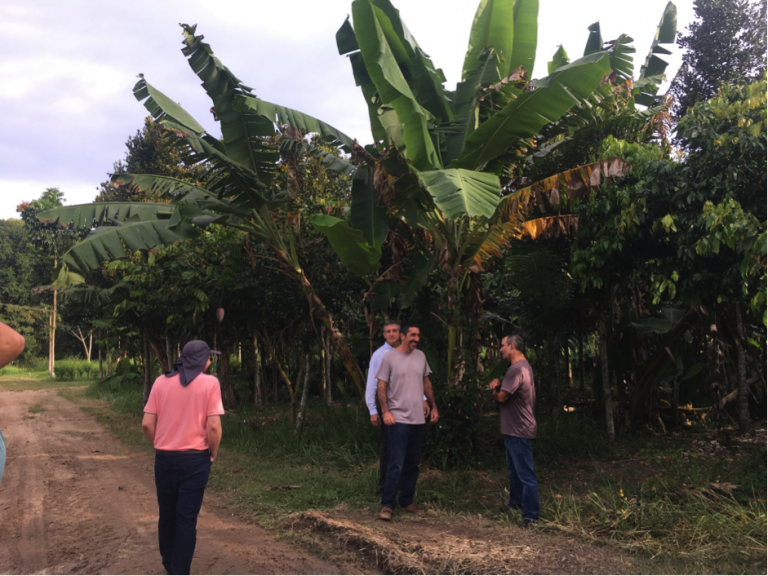
During the day, someone commented that only rich people who inherit their land can do this kind of thing — grow niche vegetables on prime land. In a time when the richest 1% of people control over half of the world’s wealth, I think it is something to encourage. If the ultra rich want to do something, it happens. And we don’t need to be anywhere near the top 1% to start doing good things with the assets we have — land, money, time, effort — or forgoing further accumulation of assets. How to be satisfied with “enough” is another area where Swedes have a lot to teach the world (see “lagom”).
After years of declining deforestation rates in Brazil (since 2004), there has now been a huge spike — to which environmental organizations have responded in outcry and the President Bolsonaro responded by undermining the data and monitoring system and blaming environmental NGOs. The German and Norwegian governments then suspended donations to the Amazon Fund (a REDD+ mechanism to protect the Brazilian Amazonian forests and monitor deforestation), and Mr. Bolsonaro closed the steering committee. The situation looks grim. But as Mr. Rogers’s mother told him, “Look for the helpers. You will always find people who are helping”. I was personally amazed and inspired by all the ‘helpers’ we met at SIMA. I have never met and traveled with government officials before, and I had no idea how dedicated and sincere these people remain in the face of great challenges.
This loops back to the age-old question of why we Westerners work in tropical countries. I am reminded of a very honest meeting I had with a top forestry official in Malaysia. He was frustrated with all the corruption in his country and became a proponent for international agreements. He said the outside eyes really help combat the rampant “hanky panky” that goes on within forest management. This is exactly where Sweden is a shining star of nearly impeccable honesty and rule-following (mind you, I say this as an American who has lived here for 2.6 years). I commend SIMA for reaching out and believe that we (Swedish Forest Agency, SLU, and other Swedish actors) can and should do what we can to support them through this cooperation.
Is there any hope left amongst the flames?
With all the new reports of the Amazon on fire!, I have had to take several deep breaths and re-evaluate whether there is any room for hope left. Over 70,000 fires are burning; indigenous groups and other activists are being murdered, and so on. I spoke with a friend last month who said that the insider info is even worse: “Between the intentional fires and the drought fires (intentional fires out of control), we basically hit the point of no return yesterday — a tipping point where the forested areas are no longer substantial enough to facilitate the humidity necessary to maintain. In terms of global climate processes, this could be a big deal — currents and trade winds big deal. Flora and fauna are losing their refugia so fast they have nowhere to run. Brazilian organizations have been cut off at the knees. Brazil has a ‘burn baby burn’ motto and environmental and indigenous activists have been getting murdered left and right. Everyone in Brazil is scared.” Devastating.
I checked the news to see how much has burned so far. I found one report that said 500 million hectares in 16 days. This is pretty impossible considering the country is than 852 million ha, and only 472 million hectares had tree cover in 2018 (about 303 million hectares in the Brazilian Amazon). Other reports say that about 345,000 hectares have been burned between January and early August.
To put this in perspective, almost 3 million hectares were cleared in 1995 and about 2.75 million in 2004. Then, deforestation rates in Brazil dropped to around half a million hectares from 2012–2014. Since Brazil is home to roughly a quarter of the world’s remaining tropical forests, what happens in Brazil is globally significant. Global deforestation rates dropped, and the perceived threat and attention to tropical forests also dropped. Since 2015, deforestation rates in Brazil have risen to about 0.8 million (800,000) hectares in 2018.
To be clear, clearing forest, primarily though burning takes place absolutely every year. Cattle ranching is responsible for over 2/3rds of this and agriculture is responsible for at least a quarter. Skies are often clouded by smoke in the dry season, which is now. Also, non-forested lands are burned repeatedly, so not every hectare that burns means a hectare of forest lost. That said, many Amazonian states are reporting major spikes in fires. Of course, every loss is still loss.
Thus, as the world watches in horror, Global Forest Watch seems remarkable calm. So far, we only have a 39% increase in fires compared to last year. However, they point out that over 60% of fires take place from September through December, so what happens next is important.
What I have seen so far is incredible. This is the most global attention, outrage, and pressure I have ever seen over an environmental issue. Trade deals are up in the air, the Finnish minister might ban beef imports from Brazil, and the far right-wing president went from blaming NGOs to deploying warplanes to dump water on the burning Amazonian forests in Rondonia. Nearly every article refers to the Amazon as the “lungs of the planet” and many include “the cradle of biodiversity” and references to enormous carbon stocks held in these forests. The value of forests are broadly recognized, and this is great news. What we are destroying is bad news, but at least it’s big news. Many articles even point out that cattle ranching is the main driver of deforestation, and if you are bothered by destruction of the Amazon you can stop eating beef.
Even declining deforestation rates mean more deforestation every year. Perhaps this rapid spike is just what we need to wake up and take action before critical tipping points are reached. Though I am alarmed and partially terrified by the rise in right wing, “pro-business” governments, I am inspired by the increasing awareness and participation to create a more just and sustainable world. Complacency is no longer an option. It’s time to take action, and we are.
We are really all in this together. It’s not business vs. environmentalists. We are all humans who depend on the sky to deliver water, the air to carry enough oxygen, the climate to be stable enough to continue growing food, and all the species to fulfill their functions. For all of us to survive, we need functioning ecosystems. Let us take united and coordinate action to build sustainable economies and livelihoods and a healthy planet.

